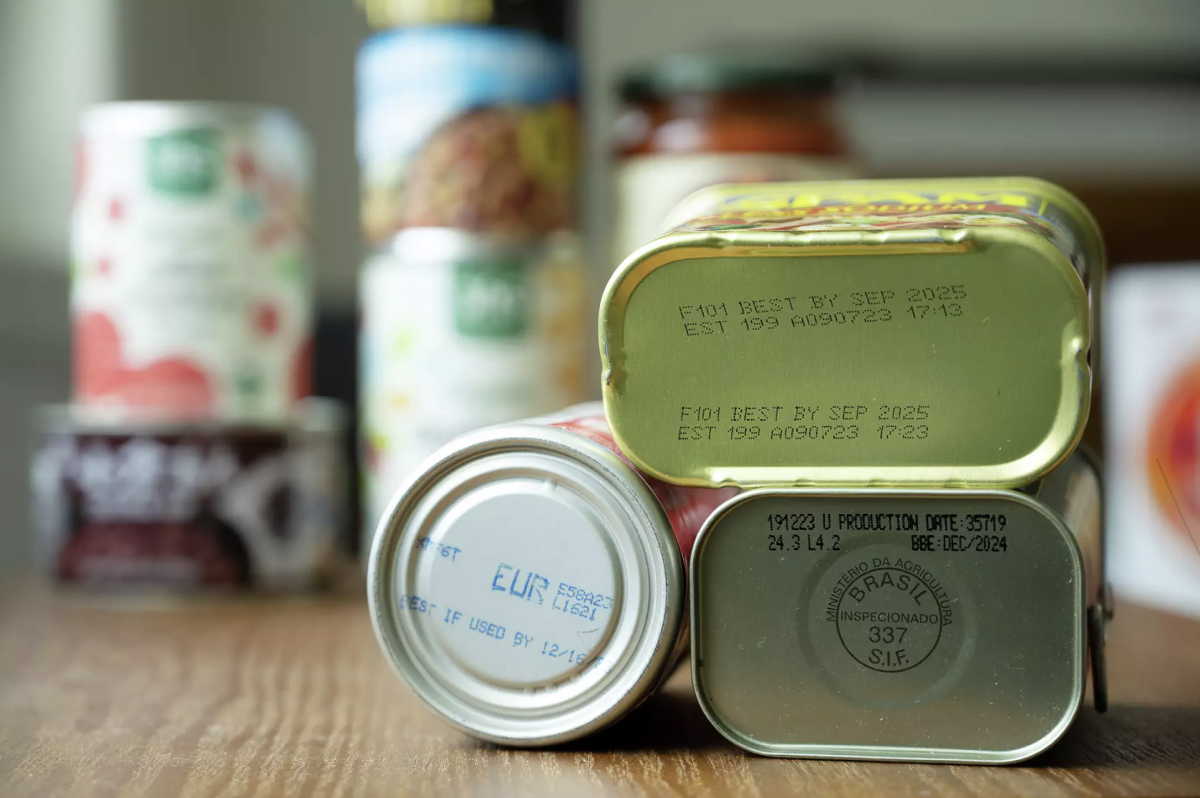Every so often, I go through my refrigerator, check labels on the items, and throw out anything that’s a few days past the expiration date. I might stop and do the sniff test, but for the most part, I do what I’ve been taught my whole life: if my jam or almond milk or shredded cheese are deemed old by the small printed numbers on the package, I discard it and add it to my shopping list.
But expiration dates — those tiny black printed numbers that seem to dictate our consuming cycle — are misunderstood from an economic and regulatory perspective. This confusion and ambiguity has a disastrous effect on the climate.
Expiration dates, officially known as “food product dating” by the U.S. Department of Agriculture, are completely voluntary for all products (with the sole exception of baby food). Thus, the Food and Drug Administration (FDA) and other federal government bodies have no regulatory presence in this universal industry practice.
In a CNN interview, Dana Gunders, the leader of ReFED, a New York-based nonprofit that studies expiration dates and food waste, described the current landscape of standards and regulations regarding expiration dates as “a complete Wild West.” She explained that rather than the dates being formulated by a nationally enforced universal standard, there is a patchwork system of state laws, historic practices, and vague guidelines.
Chemistry and Earth Science Teacher Ms. Kaitlin Douglass confirmed that “the marketing terms ‘best by, sell by, enjoy by’ are not standardized. There is no universal federal distinction of what these labels mean and the labeling often falls to states to decide what is needed (if anything) or voluntary industry standards.”
Each state has regulations on certain food categories but not others, and some states choose not to regulate anything at all. California, for example, only regulates the labeling on dairy and shellfish, while New York chooses to not regulate any foods at all. This hodgepodge of state and local regulations leads to the misconceptions, ambiguity, and lack of awareness surrounding expiration dates.
This scattered, non-centralized regulation of expiration dates — with words such as “sell-by,” “best-by,” and “use-by” being used interchangeably — has triggered a capitalistic, revenue focused transformation in the food supply industry. Without standard rules, manufacturers can strategically choose how conservative to be with their dates: the earlier the “expiration” date is placed, the fresher and better the consumer’s experience with a given product will be, and a certain brand can win over customers from other brands that become associated with a ‘less fresh’ product.
History and Economics Teacher Mr. Damon Halback elaborated on the industry economics behind expiration dates. “You could likely consume [food] for months after an expiration date, [but] the current system benefits companies who can avoid criticism about their food and market a commitment to freshness.” He added, “People want the perception that their food is fresh and are willing to pay a premium for that perception,” and thus, expiration dates can convince consumers that a given brand has the freshest product. “This is capitalism,” Mr. Hallback blatantly stated.
But the economics behind expiration dates is not their only misconception. While expiration dates are understood as the time when food is no longer safe to eat (or expired), manufacturers are really providing a gauge of their best guess as to when its product will no longer be at peak quality.
A report by USDA Food Safety and Inspection Service (FSIS) concluded that “with an exception of infant formula, if the date [on your food] passes during home storage, a product should still be safe and wholesome if handled properly until the time spoilage is evident.” In practice, this means that the average household milk, cheese, or bread can be consumed past its date, as long as no mold or bacterias have grown on them (something that can be spotted with the simple use of human senses).
But what is the main consequence of all these food labeling misconceptions? Food waste. Lots of it.
According to Feeding America, 119 billion pounds of food is wasted in the United States — nearly 40% of all food in America — every year. That equates to 130 billion meals and over $408 billion of food. While some of that waste comes from leftovers that cannot be salvaged for health reasons, lots of food is wasted simply because of misunderstandings of expiration dates.
According to a study by Harvard Law School’s Center For Health Law and Policy Innovation, an estimated 20% of household food waste can be attributed to food tossed out because it “expired.” And while some of these items are expired (spoiled perishables, dairy, and produce), lots of this food wasted is actually still safe to eat, but assumed by households to be unsafe due to the confusing food labels. AP News reported a study by ReFED that found that an estimated 7% of U.S. food waste — or four million tons annually — is contributed by consumers throwing out foods due to “confusion” regarding food labels.
Ms. Douglass explained that food waste is especially problematic because it is detrimental to the climate. She elaborated, “Food that is thrown away will break down under landfill conditions [and] will lead to the generation of the greenhouse gas methane.” She added, “[According to the USDA], food is the single largest category of material placed in municipal landfills.” This climatic issue of food waste, especially in the United States, is concerning to a broader scale as the United Nations found that food waste contributes to more than 8% of global greenhouse gas emissions.
And so, expiration dates — an economic tool for manufacturers — have many misconceptions that fuel consumer overspending and contribute to food waste and climate change. But as consumers, we all have a responsibility to be smart spenders and purchase conservatively so as to limit the amount of food waste we create. Ms. Douglass believes reducing food waste “is one of the most accessible things individuals have control over … that benefits the environment in a positive way.”
There are many specific consumer practices we should start to do. For example, Ms. Douglass explained that “food that is considered shelf-stable like canned goods, pasta, cereal, etc. essentially lasts indefinitely;” and while it may taste stale, it is still safe to consume past its expiration date. Ms. Douglass added, “Pathogens won’t grow on things stored in the freezer, but again, after enough time, the taste or texture of what you want to eat may change.”
Another consumer behavior Ms. Douglass advocated for is “buy[ing] what you need in the smallest amounts possible. Eat it within a relatively short frame of time, and then you don’t have to worry about it becoming unsafe to eat.” Of course, there are situations that make this practice challenging. Ms. Douglass understands that “some people have specific situations that make this harder, like a big family to feed, meaning buying in bulk at Costco.” In the end, it is about doing whatever a person can do given their unique situation.
While expiration dates will continue to be misunderstood and misused due to the complicated and ambiguous regulations, titles, and motivations, so long as we spread awareness and clarity to those around us and practice healthy consumer behavior, the economic and climatic drawbacks can be curbed without regulatory powers needing to step in.
Besides, it feels better to create necessary changes yourself, anyway.








